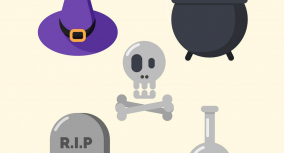Victor Frankenstein, a young scientist, creates a human-like creature in the course of a scientific experiment. But the beast murders his family and runs away. Science, religion, moral values, and persistence: which qualities make up a real human being? This Frankenstein Study Guide answers all your questions about the novel.
Frankenstein Key Facts
Frankenstein Articles
Mary Shelley’s most famous novel is Frankenstein; or, The Modern Prometheus. It tells the tragic story of a scientist. The article contains a short summary of Frankenstein, a plot infographic, and a detailed description of the novel’s chapters.
The article contains all the information about Frankenstein’s characters: Victor Frankenstein, the Monster, Robert Walton, Henry Clerval, and others. In the first section, you’ll find a Frankenstein character map.
The article provides an explanation of Frankenstein’s themes. The core issues represented in Shelley’s writing are dangerous knowledge, nature, isolation, monstrosity, and revenge.
The article explains the symbolism in Frankenstein. The key symbols used by Shelley are fire and light. The book’s central idea is that scientists aim to shed some light on our world’s secrets. Even though it seems quite promising and hopeful, the light can be dangerous.
Frankenstein: Essay Topics & Samples
There are so many ideas for essay topics about Frankenstein! This article is here to help you if you don’t know what to write about or have an abundance of choices. Check out the following list of Frankenstein essay prompts that might inspire you to create an ideal paper.
Historical Context of Frankenstein
Mary Shelley wrote Frankenstein in the context of galvanism ideas prevalent at the beginning of the 19th century. She was 18 years old when she traveled around Europe with Percy Shelley (her husband), Lord Byron, and John Polidori. Rainy weather made them sit indoors for many days, and Lord Byron suggested writing horror stories to amuse themselves. Then one of the scariest stories in human history was born.
Mary had an extraordinary life. William Godwin and Mary Wollstonecraft, her parents, were philosophers. Her mother was the author of A Vindication of the Rights of Woman, an important feministic and political text. Naturally, her family was liberal and academic. She was encouraged to read and think critically.
The novel was created at a pivotal moment in modern history. At that moment, the industrial revolution shifted society from an agricultural to a technology-based economy. Innovations impacted every aspect of human life. People moved from farms in villages to factories and offices in cities. Mary Shelley, as a romantic figure, was skeptical of the rapid industrialization. She was concerned about the consequences of the new technologies on nature. In her opinion, they were also harmful to the human mind and spirit. In this perspective, Frankenstein should be analyzed as a warning against the possible results of reckless technological progress. The author acknowledges the benefits of industrialization. Still, she urges us to mind the risks it bears. Victor is “drunk” with his success. He is driven by the higher purpose and overlooks the imminent disaster. The main character symbolizes the heedless rush for inventions typical of that time.











